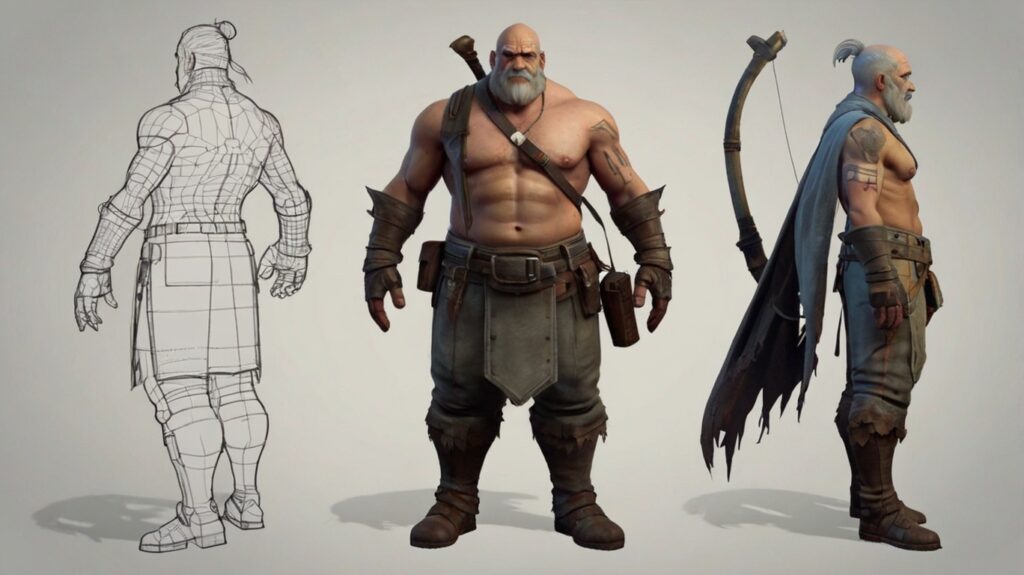
It takes both art and science to make 2D characters for modern games that are interesting. There has never been more of a need for superior, eye-catching characters as the game business develops. This piece explores the fundamentals of 2D character modeling, the steps involved, and the variables that affect the price of creating these models.
Basics of 2D Character Modeling
1. Concept and Design:
- The process of generating ideas starts with ideation and rough sketching. At this step, we define the character’s personality, past, and function in the game.
- Obtaining References: Gathering references from a veriety of sources is very helpful in comprehensive understanding of numerous styles, anatomy, and design features that can influence the character’s look.
- Shape language and silhouette: Creating a distinctive and memorable character requires a strong silhouette. Character attributes are also effectively communicated through the use of shape language (e.g., gentle curves for heroes, harsh edges for villains).
2. Drawing and Detailing:
- Initially, create crude drawings to experiment with various body positions, expressions on the face, and outfit concepts.
- Improvement: Clearly identify character features and include more information.
- Line art: Draw tidy lines and well-defined shapes.
3. Coloring and Shading:
- Use flat base colors to define a character’s color scheme.
- Add shadows and highlights, to give your character dimension and a sense of volume. This action gives the character personality and distinguishes it.
4. Final Touches:
- Texturing can vary from basic flat colors to more intricate textures that enhance realism, depending on the style of the game.
- Make last-minute changes to guarantee the character has a professional and unified appearance.

Factors Influencing the Cost of 2D Character Modeling
A number of variables may affect the price of producing two-dimensional characters. For example, the expertise level of the artist, the requirements of the project, and the complexity of the design.
1. Complexity of Design:
- Detail Level: Characters with elaborate accessories, clothes, and embellishments cost extra since they take more time and work to create.
- Animation Needs: The cost can be greatly affected by the need for more frames and intricate rigging if the character needs to be animated.
2. Art Style:
- Realistic vs. Stylized: Because realistic characters require accurate anatomy and intricate texturing, they can take longer to perfect. Even though they can be created more quickly, stylized characters nevertheless demand a great degree of talent to be appealing and consistent.
3. Artist’s Experience:
- Skill Level: Strong portfolios and years of experience usually translate into higher fees for experienced artists, who can produce high-caliber work.
- Specialization: Due to their specialized knowledge, artists who focus on particular genres or character types may be paid more.
4. Project Scope and Timeline:
- Number of Characters: Larger projects requiring multiple characters will naturally incur higher costs.
- Deadlines: Tight deadlines may require artists to work overtime or bring in additional resources, leading to increased costs.
5. Revisions and Feedback:
- Iteration Process: The total cost may also vary depending on revisions and the number of changes required during the feedback process. Excessive changes can be avoided with clear communication and thorough first briefings.
Conclusion
One of the most important parts of game production is 2D character modeling, which greatly enhances the player experience and overall appeal of the game. Better planning and obtaining the most return on investment may be achieved by developers by having a basic understanding of 2D character modeling and the aspects that affect its cost. At Melior Games, our talented artistic team is committed to giving players all over the world unforgettable and captivating gaming experiences by bringing your characters to life.




